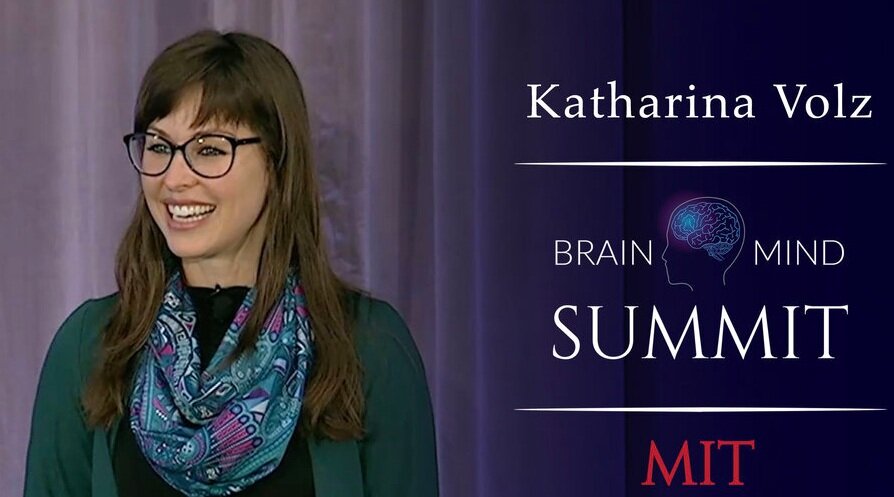We are so honored to be nominated in the startup category at this years Prix Galien! 🙏
$6.1M Investment in AI Platform Targets New Treatments
OccamzRazor has received $6.1 million in investments to support its artificial intelligence (AI)- based platform aimed at accelerating the identification of new therapeutic targets for Parkinson’s disease.
With the technology, which uses AI to analyze data from many published sources, novel treatment targets can be identified and initially validated in a matter of months, rather than years — all at a lower cost, according to the company.
“I’m excited to see the progress OccamzRazor has made thus far on integrating many disparate sources of data and applying machine learning towards the discovery of new candidates for fighting degenerative brain diseases,” Jeff Dean, PhD, lead investor and the lead of Google’s AI division, said in a press release
To continue reading more about our fundraising, click HERE to check out our write up in Parkinson’s News Today!
OccamzRazor announces closing of $6.1M financing round to launch their AI-enabled discovery pipeline and advance preclinical development in Parkinson's
OccamzRazor is on a mission to create the first curative treatments for complex brain-aging diseases, such as Parkinson's disease. The company recently received approximately $6.1M in financing to launch their AI-enabled discovery pipeline and advance preclinical development in Parkinson's. This round was led by Jeff Dean, one of the top AI researchers in modern machine learning today. Other investors include Lauder Partners, re.Mind Capital, and Valor Equity Partners.
"I'm excited to see the progress OccamzRazor has made thus far on integrating many disparate sources of data and applying machine learning towards the discovery of new candidates for fighting degenerative brain diseases," says lead investor Jeff Dean.
A key accomplishment in using the OccamzRazor platform has been the discovery and initial validation of novel target genes for the treatment of Parkinson's disease — a breakthrough finding accelerated by AI to months rather than years.
OccamzRazor was founded to help patients with brain-aging disorders where there is a lack of treatment options that halt or reverse the disease. Drug development in brain-aging has historically been driven by serendipity and has nearly a 100% failure rate. OccamzRazor is determined to change this. "We are currently in the middle of an exponential increase in biomedical datasets that can offer new perspectives on neurodegeneration. Hidden within this data are the insights needed to develop the right therapies for the right patient populations — the data just needs to be connected in the right way, with the right AI built to interpret it," says CEO and co-founder, Katharina Sophia Volz.
By combining graph machine learning (RazorBrain™), graph prediction (RazorLink™), and natural language processing (RazorPanorama™), OccamzRazor generates testable, data-driven hypotheses that increase success rates and reduce costs in neurodegenerative drug development.
OccamzRazor has raised a total of $12M and has been supported by the Michael J Fox Foundation and the Synthetic Neurobiology Group at MIT. The company is headquartered at Johnson & Johnson's innovation hub J-LABS in New York City.
See our full press release on PR Newswire.
OccamzRazor wins the CNS Innovation Showcase Award 2021
Congratulations to the OccamzRazor team!
We are honored to announce that OccamzRazor has received the #CNSsummit Innovation Showcase award! Our team is beyond thankful and we could not be more excited to have the endorsement of such an impressive group of leaders. We look forward to seeing you all again soon! A special thank you to AMIR KALALI, MD and the CNSsummit team for hosting such a spectacular summit and to the entire OccamzRazor team for all your hard work.
This is an award for innovative emerging companies. The Innovation Showcase submissions are peer-reviewed and selected based on their level of innovation and novel approach to a challenge in clinical development.
OccamzRazor joins Johnson & Johnson Innovation Hub in New York
After months of purely remote work, we have joined JLabs, the Johnson & Johnson Innovation Hub in downtown Manhattan. Our New York-based team will have desks on site and the prominent SoHo location will serve as our new physical headquarters. We are excited to be among the few companies that get to work in this stimulating environment, offering a dense network of innovators in biomedicine and excellent relations to the J&J ecosystem.
Interview with Katharina Volz on Fortune digital features
OccamzRazor presents two contributions to NeurIPS 2020
We proudly present two contributions to the NeurIPS machine learning conference 2020. Our machine learning engineer Srivamshi Pittala will present our paper Relation-weighted link prediction for disease gene identification and our machine learning intern Jupinder Parmar will present our paper Biomedical Information Extraction for Disease Gene Prioritization at the workshop Knowledge Representation & Reasoning Meets Machine Learning (KR2ML).
Both papers represent major breakthroughs on our way to optimize and combine various machine learning approaches to drug discovery.
The paper lead by Srivamshi explores various ways relationships between genes and diseases can be represented in a knowledge graph. He was able to show that not all relationships in the graph are equal in their contribution to predictive accuracy. By optimizing the weights for various types of relationships, Srivamshi improved the accuracy for predicting new links between genes and diseases. The results show that through careful evaluation of the importance of every relationship type for predictive tasks, we can outperform the competition by 24.1%. Also, a comparison to opentargets.org shows that using knowledge graphs over genetic-focused human target identification lets us predict more targets that have already shown preclinical and clinical success.
Jupinder explored the importance of text-based knowledge to inform our knowledge graph and improve our prediction of new disease-related genes, that can serve as potential drug targets. He focused on physical interactions between proteins in the human body. Many known protein-protein relationships are represented in the database string-db. We used that resource to create a protein-protein graph as part of our pipeline to predict new drug targets. Our experience as biologists suggested that structured databases often do not capture all published relationships, especially from papers that characterize only one or two specific interactions as opposed to large proteomics experiments. Our hypothesis is that if we use natural language processing to capture all those relationships in papers, our predictive capabilities improve. Jupinder showed that this is indeed the case as he got a 20% lift in predictive performance through adding text-based data to the structured core dataset. This confirms our approach of combining text and structured sources to find new treatments.
A high-level overview of our information extraction pipeline from Parmar et al, 2020. We only display the single candidate relation (ARAP2, ARF6) for simplicity although three candidate relations are present.
These findings represent a significant milestone for OccamzRazor, proving our concept and paving our path for clinical success.
Katharina Sophia Volz Interview with Inverse Magazine
We were featured in La Repubblica, one of Italy's largest newspapers.
OccamzRazor was featured in an article by
La Repubblica.
MIT 35 Under 35 Innovator List
We are very excited to announce our CEO, Katharina Volz, has been selected and featured on the 2020 MIT 35 Under 35 Innovator List!
Published Article in Neo.Life
OccamzRazor was featured in an article by Neo.Life.
United Nations NEXUS Impact Accelerator Program
We are excited to announce our acceptance into The United Nations NEXUS Impact Accelerator program!
Inspired by a vision to accelerate the dreams and impact of entrepreneurs, The NEXUS Futurism Working Group - in collaboration with NEXUS HQ - has designed an Accelerator pilot program to support the next phase of our journey as a social entrepreneur.
Published Article in WIRED
Check out here our CEO’s article in WIRED about the coming of AI-developed drugs
Published Articles
We have co-published part of our NLP work in collaboration with the leading NLP lab at Stanford at ACL. The No. 1 ranked publishing venue for natural language processing research.
The world's leading AI experts have reviewed parts of our technology (double-blinded submission) and have accepted it for publication at the most prestigious workshop in the field: NIPS Workshop on Relational Representation Learning.
Featured in WIRED
OccamzRazor featured in WIRED.
United Nations - NOVUS Summit 2019
In July, Katharina Volz spoke at the NOVUS Summit. A forum for pioneers, innovators, and world leaders to align values and come closer to achieving the UN Global Goals.
Listen in, as Katharina speaks on using machine learning to find a cure for PD.
SciFoo 2019
Founder & CEO Katharina Volz and Head of Science Martin Bringmann had the opportunity to attend SciFoo this summer.
WIRED Pulse: AI at the Barbican
Katharina had the opportunity to speak at WIRED Pulse. A conference dedicated to connecting the future of artificial intelligence with the human experience. Meet the 2019 Speakers here.
BrainMind Summit at MIT
In May, Katharina had the honor of being a featured speaker at BrainMind MIT.
Check out her talk here.
Founder & CEO Katharina Volz Joins Phil Libin's "All Turtles" Podcast
OccamzRazor’s founder & CEO, Katharina Volz, appeared on Phil Libin’s All Turtles podcast to explain how the company is leading the way in breaking down “siloed research” - a major step in discovering cures for complex diseases like Parkinson’s.



















